Kenneth Atchity's Blog, page 135
August 7, 2017
We all need to listen to this: Is truth still a relevant concept? How do we determine it?
The more we read and watch online, the harder it becomes to tell the difference between what's real and what's fake. It's as if we know more but understand less, says philosopher Michael Patrick Lynch. In this talk, he dares us to take active steps to burst our filter bubbles and participate in the common reality that actually underpins everything.
This talk was presented at an official TED conference.

Published on August 07, 2017 00:00
August 5, 2017
Larry D. Thompson's Dark Money is a finalists oin the 2017 Red City Review Book Awards!
Dark Money is eligible to receive the Fan Favorite award! Anyone can vote between now and August 15th.
To vote, you must tweet at us by mentioning @redcityreview and write the name of the book and author you want to nominate. Please also use the hashtag #redcityreviewfanfavorite.
One vote per Twitter account. Votes that do not follow these guidelines will not be counted.
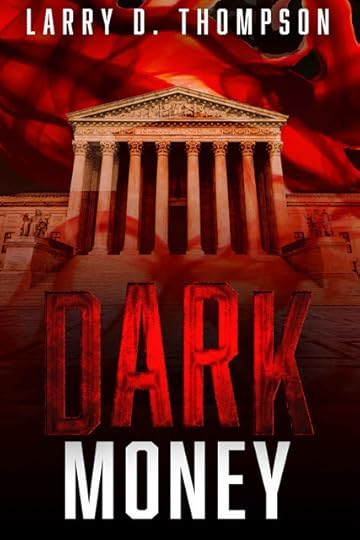

"Dark Money is a delightful detective yarn but, more than that, it brings to light the terrible . . . corruption of American politics. Highly recommended."
~ Dain Dunstone.
Jack Bryant, a millionaire plaintiff lawyer, is caught up in the collision of money and politics when he receives a call from his old army buddy Walt Frazier. Walt needs his assistance in evaluating security for Texas Governor Rob Lardner at a Halloween costume fundraiser thrown by one of the nation’s richest Republican billionaires at his mansion in Fort Worth.
Miriam Van Zandt is the best marksman among The Alamo Defenders, an anti-government militia group in West Texas. She attends the fundraiser dressed as a cat burglar, wounds the governor, and murders the host’s brother, another Republican billionaire. She is shot in the leg but manages to escape.
Jack is appointed special prosecutor and calls in the Texas DPS SWAT team to track Van Zandt and attack The Alamo Defenders’ compound in a lonely part of West Texas. Van Zandt’s father, founder of the Defenders, is killed in the attack and Miriam is left in a coma. The authorities declare victory and close the case—but Jack knows better.
The person behind the Halloween massacre has yet to be caught. When Walt and the protective detail are sued by the fundraiser host and the widow of the dead man, Jack follows the dark money of political contributions from the Cayman Islands to Washington to Eastern Europe, and New Orleans.
Dark Money is a thriller, a mystery and an expose for fans of John Grisham and Joseph Finder.
To vote, you must tweet at us by mentioning @redcityreview and write the name of the book and author you want to nominate. Please also use the hashtag #redcityreviewfanfavorite.
One vote per Twitter account. Votes that do not follow these guidelines will not be counted.


"Dark Money is a delightful detective yarn but, more than that, it brings to light the terrible . . . corruption of American politics. Highly recommended."
~ Dain Dunstone.
Jack Bryant, a millionaire plaintiff lawyer, is caught up in the collision of money and politics when he receives a call from his old army buddy Walt Frazier. Walt needs his assistance in evaluating security for Texas Governor Rob Lardner at a Halloween costume fundraiser thrown by one of the nation’s richest Republican billionaires at his mansion in Fort Worth.
Miriam Van Zandt is the best marksman among The Alamo Defenders, an anti-government militia group in West Texas. She attends the fundraiser dressed as a cat burglar, wounds the governor, and murders the host’s brother, another Republican billionaire. She is shot in the leg but manages to escape.
Jack is appointed special prosecutor and calls in the Texas DPS SWAT team to track Van Zandt and attack The Alamo Defenders’ compound in a lonely part of West Texas. Van Zandt’s father, founder of the Defenders, is killed in the attack and Miriam is left in a coma. The authorities declare victory and close the case—but Jack knows better.
The person behind the Halloween massacre has yet to be caught. When Walt and the protective detail are sued by the fundraiser host and the widow of the dead man, Jack follows the dark money of political contributions from the Cayman Islands to Washington to Eastern Europe, and New Orleans.
Dark Money is a thriller, a mystery and an expose for fans of John Grisham and Joseph Finder.

Published on August 05, 2017 00:00
Larry D. Thompson's Dark Moey is a finalists oin the 2017 Red City Review Book Awards!
Dark Money is eligible to receive the Fan Favorite award! Anyone can vote between now and August 15th.
To vote, you must tweet at us by mentioning @redcityreview and write the name of the book and author you want to nominate. Please also use the hashtag #redcityreviewfanfavorite.
One vote per Twitter account. Votes that do not follow these guidelines will not be counted.


"Dark Money is a delightful detective yarn but, more than that, it brings to light the terrible . . . corruption of American politics. Highly recommended."
~ Dain Dunstone.
Jack Bryant, a millionaire plaintiff lawyer, is caught up in the collision of money and politics when he receives a call from his old army buddy Walt Frazier. Walt needs his assistance in evaluating security for Texas Governor Rob Lardner at a Halloween costume fundraiser thrown by one of the nation’s richest Republican billionaires at his mansion in Fort Worth.
Miriam Van Zandt is the best marksman among The Alamo Defenders, an anti-government militia group in West Texas. She attends the fundraiser dressed as a cat burglar, wounds the governor, and murders the host’s brother, another Republican billionaire. She is shot in the leg but manages to escape.
Jack is appointed special prosecutor and calls in the Texas DPS SWAT team to track Van Zandt and attack The Alamo Defenders’ compound in a lonely part of West Texas. Van Zandt’s father, founder of the Defenders, is killed in the attack and Miriam is left in a coma. The authorities declare victory and close the case—but Jack knows better.
The person behind the Halloween massacre has yet to be caught. When Walt and the protective detail are sued by the fundraiser host and the widow of the dead man, Jack follows the dark money of political contributions from the Cayman Islands to Washington to Eastern Europe, and New Orleans.
Dark Money is a thriller, a mystery and an expose for fans of John Grisham and Joseph Finder.
To vote, you must tweet at us by mentioning @redcityreview and write the name of the book and author you want to nominate. Please also use the hashtag #redcityreviewfanfavorite.
One vote per Twitter account. Votes that do not follow these guidelines will not be counted.


"Dark Money is a delightful detective yarn but, more than that, it brings to light the terrible . . . corruption of American politics. Highly recommended."
~ Dain Dunstone.
Jack Bryant, a millionaire plaintiff lawyer, is caught up in the collision of money and politics when he receives a call from his old army buddy Walt Frazier. Walt needs his assistance in evaluating security for Texas Governor Rob Lardner at a Halloween costume fundraiser thrown by one of the nation’s richest Republican billionaires at his mansion in Fort Worth.
Miriam Van Zandt is the best marksman among The Alamo Defenders, an anti-government militia group in West Texas. She attends the fundraiser dressed as a cat burglar, wounds the governor, and murders the host’s brother, another Republican billionaire. She is shot in the leg but manages to escape.
Jack is appointed special prosecutor and calls in the Texas DPS SWAT team to track Van Zandt and attack The Alamo Defenders’ compound in a lonely part of West Texas. Van Zandt’s father, founder of the Defenders, is killed in the attack and Miriam is left in a coma. The authorities declare victory and close the case—but Jack knows better.
The person behind the Halloween massacre has yet to be caught. When Walt and the protective detail are sued by the fundraiser host and the widow of the dead man, Jack follows the dark money of political contributions from the Cayman Islands to Washington to Eastern Europe, and New Orleans.
Dark Money is a thriller, a mystery and an expose for fans of John Grisham and Joseph Finder.

Published on August 05, 2017 00:00
August 3, 2017
Kenneth Atchity on What is Coverage? Dublin Writers' Conference
The Hollywood decision-maker who receives your story submission rarely has time to read it him- or herself. They assign it “for coverage” to the story department, and receive back a coverage. “Coverage” is the term used in Hollywood for the document that determines the fate of most story submissions.

Published on August 03, 2017 00:00
August 1, 2017
The Washington Times Reviews John Pfordresher's THE SECRET HISTORY OF ‘JANE EYRE’: HOW CHARLOTTE BRONTE WROTE HER MASTERPIECE
THE SECRET HISTORY OF ‘JANE EYRE’: HOW CHARLOTTE BRONTE WROTE HER MASTERPIECE
By John Pfordresher


If I had read this admirable study by John Pfordresher, a professor of English at Georgetown University, of the enormous amount of lived experience Charlotte Bronte put into her novelistic Magnum Opus “Jane Eyre” even a few months ago, I would have thought it a little bit superfluous. After all, more than any other novel I have read, it strikes one with such immediate force, inducing a visceral reaction, an immediate empathy with the eponymous heroine.
Reading about the powerful emotions, even more powerfully expressed, in its opening which the bullied, scorned child Jane feels while locked in that infernal room, you would have to have the stoniest of hearts not to be moved to your very core.
But recently at an academic symposium, I had to sit and listen while a professor at a prestigious British university bloviated — seemingly endlessly — about what a ludicrous provincial figure Charlotte Bronte cut in London literary society.
In an insufferably superior manner, he mocked her Yorkshire accent, her dour demeanor, the paucity of her conversational skills, all the while paying lip service to her as a great writer. His whole point, insofar as one could grasp it amid the excess verbiage, was how could this ridiculous creature have produced such great books?
Had I been able to get a word in edgewise, what I would have said was “you just don’t get it, man!” And what I was thinking was “pity your poor students whom you are so misleading.” Didn’t he realize that perhaps the central point of “Jane Eyre” is that a small, unprepossessing young woman could possess a strength of character and of will so powerful as to be all-consuming and literally terrifying?
After all, when she does eventually get the once so formidable Mr. Rochester, who had deceived, teased and tormented even as he bewitched her, he is much reduced and physically as well as emotionally in her power. Make no mistake, it is the small, plain woman who has the upper hand now.
So if there are people like this strutting their false stuff in the groves of academe, Mr. Pfordresher’s students are fortunate indeed to have a guide like him to Charlotte Bronte’s life and oeuvre who understands how intricately they are intertwined. And so are the readers of this book, which now seems to me a good deal less redundant and a great deal more necessary than I might previously have thought.
This is indubitably a teacher and a critic who has enormous respect for Charlotte Bronte. And he knows how to express it through the words of those who actually knew her:
“When the well-known critic Harriet Martineau visited the family home in Haworth in later years she felt ‘something inexpressibly affecting in the aspect of the frail little creature who had done such wonderful things, and who was able to bear up, with so bright an eye and so composed a countenance, under not only such a weight of sorrow, but such a prospect of solitude. In her deep mourning dress (neat as a Quaker’s), with her beautiful hair, smooth and brown, her fine eyes, and her sensible face indicating a habit of self-control, she seemed a perfect household image.’ “
And how to add his own penetrating insight to this perceptive, respectful portrait:
“Reading ‘Jane Eyre’ we know how much of a personal victory Bronte had achieved through that self-control and how many secrets her composed countenance had concealed.”
That sentence, with which Mr. Pfordresher concludes his fine study, is nothing less than the distillation of his thesis and the multiple demonstrations of its validity.
Although Mr. Pfordresher gives due attention to Charlotte Bronte’s other works like “Shirley” and “Villette,” it is no accident that his title and subtitle enshrine “Jane Eyre” as her masterpiece; and rightly so.
It needs emphasizing that, just as the academic canon has come to elevate Jane Austen’s “Emma” on grounds of its structural perfection over her masterpiece “Pride and Prejudice,” it has tried the same legerdemain (albeit less successfully) with “Villette.” Here, the author demonstrates convincingly that although this last of Bronte’s novels published in her all too short lifetime draws more directly on her thwarted love for her teacher Constantin Heger in Brussels, Jane’s obsessive love for Mr. Rochester draws even more strongly on it.
And it is important never to lose sight that, however accomplished “Villette” is, “Jane Eyre” is, in addition to its manifold intrinsic virtues, probably the single most influential English novel ever written. Think “Rebecca” among so many other novels that could not have been written but for this magnificent precursor: a true and fruitful masterpiece indeed.
• Martin Rubin is a writer and critic in Pasadena, California.

By John Pfordresher


If I had read this admirable study by John Pfordresher, a professor of English at Georgetown University, of the enormous amount of lived experience Charlotte Bronte put into her novelistic Magnum Opus “Jane Eyre” even a few months ago, I would have thought it a little bit superfluous. After all, more than any other novel I have read, it strikes one with such immediate force, inducing a visceral reaction, an immediate empathy with the eponymous heroine.
Reading about the powerful emotions, even more powerfully expressed, in its opening which the bullied, scorned child Jane feels while locked in that infernal room, you would have to have the stoniest of hearts not to be moved to your very core.
But recently at an academic symposium, I had to sit and listen while a professor at a prestigious British university bloviated — seemingly endlessly — about what a ludicrous provincial figure Charlotte Bronte cut in London literary society.
In an insufferably superior manner, he mocked her Yorkshire accent, her dour demeanor, the paucity of her conversational skills, all the while paying lip service to her as a great writer. His whole point, insofar as one could grasp it amid the excess verbiage, was how could this ridiculous creature have produced such great books?
Had I been able to get a word in edgewise, what I would have said was “you just don’t get it, man!” And what I was thinking was “pity your poor students whom you are so misleading.” Didn’t he realize that perhaps the central point of “Jane Eyre” is that a small, unprepossessing young woman could possess a strength of character and of will so powerful as to be all-consuming and literally terrifying?
After all, when she does eventually get the once so formidable Mr. Rochester, who had deceived, teased and tormented even as he bewitched her, he is much reduced and physically as well as emotionally in her power. Make no mistake, it is the small, plain woman who has the upper hand now.
So if there are people like this strutting their false stuff in the groves of academe, Mr. Pfordresher’s students are fortunate indeed to have a guide like him to Charlotte Bronte’s life and oeuvre who understands how intricately they are intertwined. And so are the readers of this book, which now seems to me a good deal less redundant and a great deal more necessary than I might previously have thought.
This is indubitably a teacher and a critic who has enormous respect for Charlotte Bronte. And he knows how to express it through the words of those who actually knew her:
“When the well-known critic Harriet Martineau visited the family home in Haworth in later years she felt ‘something inexpressibly affecting in the aspect of the frail little creature who had done such wonderful things, and who was able to bear up, with so bright an eye and so composed a countenance, under not only such a weight of sorrow, but such a prospect of solitude. In her deep mourning dress (neat as a Quaker’s), with her beautiful hair, smooth and brown, her fine eyes, and her sensible face indicating a habit of self-control, she seemed a perfect household image.’ “
And how to add his own penetrating insight to this perceptive, respectful portrait:
“Reading ‘Jane Eyre’ we know how much of a personal victory Bronte had achieved through that self-control and how many secrets her composed countenance had concealed.”
That sentence, with which Mr. Pfordresher concludes his fine study, is nothing less than the distillation of his thesis and the multiple demonstrations of its validity.
Although Mr. Pfordresher gives due attention to Charlotte Bronte’s other works like “Shirley” and “Villette,” it is no accident that his title and subtitle enshrine “Jane Eyre” as her masterpiece; and rightly so.
It needs emphasizing that, just as the academic canon has come to elevate Jane Austen’s “Emma” on grounds of its structural perfection over her masterpiece “Pride and Prejudice,” it has tried the same legerdemain (albeit less successfully) with “Villette.” Here, the author demonstrates convincingly that although this last of Bronte’s novels published in her all too short lifetime draws more directly on her thwarted love for her teacher Constantin Heger in Brussels, Jane’s obsessive love for Mr. Rochester draws even more strongly on it.
And it is important never to lose sight that, however accomplished “Villette” is, “Jane Eyre” is, in addition to its manifold intrinsic virtues, probably the single most influential English novel ever written. Think “Rebecca” among so many other novels that could not have been written but for this magnificent precursor: a true and fruitful masterpiece indeed.
• Martin Rubin is a writer and critic in Pasadena, California.

Published on August 01, 2017 00:00
July 31, 2017
R.I.P. Sam Shepherd
Published on July 31, 2017 16:33
Help Make a Thrilling Movie About a Stolen Election Because America Needs to Understand the Risk
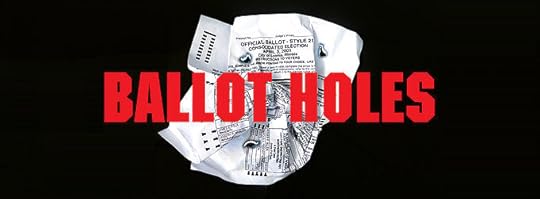
Sanford (Sandy) Morganstein is looking for people to get involved.
He plans to raise the awareness of the vulnerability of our election process to hacking and foreign influence by creating an entertaining, thrilling movie (or TV series) based on the novel Cassandra, Chanting written in 2008, a novel about how America's enemies could steal an election and what would happen. Sound familiar?
Check out the trailer on Kickstarter and, you can BallotHolesMovie.com

Published on July 31, 2017 00:00
July 29, 2017
Story Merchant Books Amazon August eBook Deals

FREE July 30th - August 3!!
Terry Stanfill's Realms of Gold
A present day romance with vignettes from the past traces the great Krater's arduous journey from the golden city of Sybaris to the golden hillsides of la Côte d'Or.
www.amazon.com/B007N9L3LQ
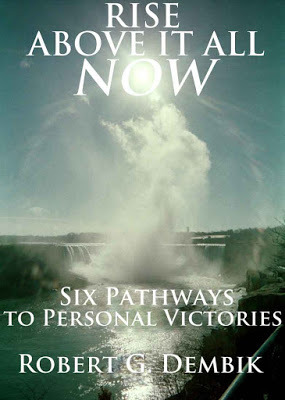 FREE August 1 - August 5
FREE August 1 - August 5 Rise Above It All NOW
“Someone or something will always have your back.”
Robert G. Dembik’s self-help inspirational work Rise Above It All Now: Six Pathways to Personal Victory
www.amazon.com/dp/B0096TU8IA
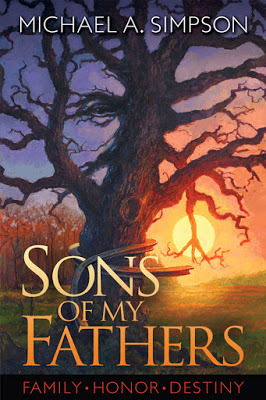 FREE August 3rd - August 7th
FREE August 3rd - August 7thMichael A Simpson's Sons of My Fathers
"deeply personal... compellingly written... evocative... a transformative and timeless journey." - Story Merchant
Based on the true story of the author's family, a multi-generational journey that intertwines two dramatic stories set one hundred years apart.
www.amazon.com/dp/B01KYMBCDM
 FREE August 6 - August 10!
FREE August 6 - August 10! Sacrificial Lamb
Nancy Freedman's double biography of Charles and Mary Lamb
The story of two brilliant artists, cut off from a normal life by a single day of madness.
www.amazon.com/dp/B01EKBVH3S
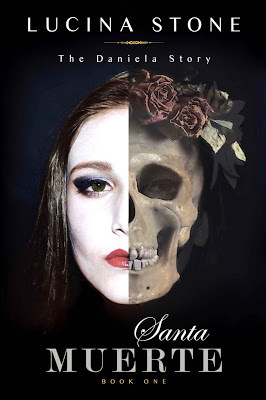 FREE August 9 - August 13
FREE August 9 - August 13Santa Muerte by Lucina Stone
Lucina Stone blends Mexican folklore with modern technology and time travel in this seductive new series where the lines between right and wrong, protagonist and antagonist, truth and fiction, love and lust, and life and death have never been more blurred.
www.amazon.com/dp/B01AHIS2CC
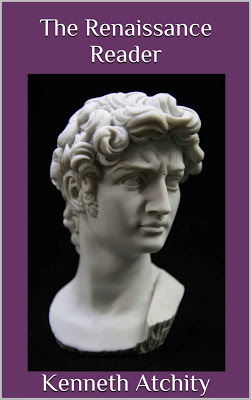 FREE August 10 - August 14
FREE August 10 - August 14The Renaissance Reader
As the transition period between the Middle Ages and modern times, the Renaissance is perhaps the most distinguished age since that of Classical Greece. Part of Harper Reference's successful Reader series, Kenneth Atchity's Renaissance Reader is a unique volume that provides a vast and varied collection of primary source documents and artwork of this fascinating period of history.
www.amazon.com/dp/B06WWHTXSF

Published on July 29, 2017 00:00
July 27, 2017
There are some things money can’t buy.
There’s a point you start getting inverse correlation between wealth and quality of life. My life couldn’t be happier. In fact, it’d be worse if I had six or eight houses. I have everything I need to have, and it doesn’t make a difference after a point….good housing, good health, good food, good transport. When you get to 10 times, or 100 times, or 1,000 times, it doesn’t make a difference…Success is really doing what you love and doing it well. Really getting to do what you love to do every day—that’s really the ultimate luxury. Your standard of living is not equal to your cost of living.
—Warren Buffett, CNBC
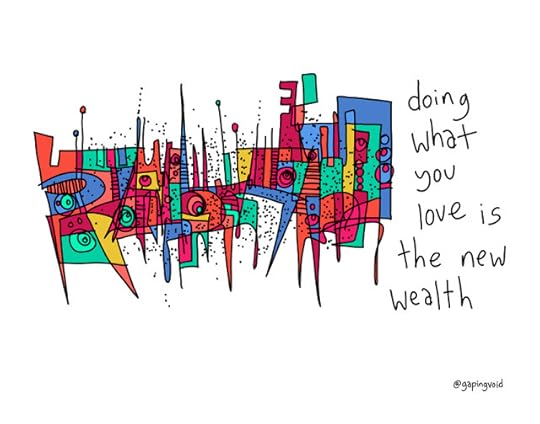

—Warren Buffett, CNBC


Published on July 27, 2017 00:00
July 25, 2017
Join Kenneth Atchity and discover the secrets of selling your story to indie film studios Author Learning Center #FREE webinar! July 26th
REGISTER NOW!

The explosive independent (“indie”) film market is the primary entry point for books seeking adaptation to film. Indie producers are much more accessible to new authors today than studio buyers, and can be approached through representatives like attorneys, agents, and managers, or sometimes directly by email or meetings at writers’ conferences. This webinar will help you understand (1) what the indie market wants to buy; (2) how to prepare your sales materials for this market; and (3) how to find your way to the buyers. Dr. Atchity will also cover expectations, shaping your Hollywood career, and how to learn the nuts and bolts of the indie market.
Topics included:
• Loglines
• Treatments
• Should I write my own script?
• The book to film conveyor belt
About the Presenter: Dr. Ken Atchity (Ph.D Yale) believes in the power of stories to change the world. He’s produced over 30 films for television and cinema, including Hysteria, The Lost Valentine, Joe Somebody, The Amityville Horror: The Evil Escapes, and Warner Brothers’ forthcoming Meg (starring Jason Statham, directed by Jon Turtletaub). As a literary manager (“The Story Merchant”) he’s made hundreds of book and film deals for his clients, including nearly 20 New York Times bestsellers. He’s written two dozen books of nonfiction (A Writer’s Time, Write Treatments That Sell, and Sell Your Story to Hollywood) and fiction (The Messiah Matrix, Seven Ways to Die). After nearly 20 years as Fulbright professor of comparative literature at Occidental College, he assists writers reach dream career objectives in his five companies that deal with every facet of a writer’s career

The explosive independent (“indie”) film market is the primary entry point for books seeking adaptation to film. Indie producers are much more accessible to new authors today than studio buyers, and can be approached through representatives like attorneys, agents, and managers, or sometimes directly by email or meetings at writers’ conferences. This webinar will help you understand (1) what the indie market wants to buy; (2) how to prepare your sales materials for this market; and (3) how to find your way to the buyers. Dr. Atchity will also cover expectations, shaping your Hollywood career, and how to learn the nuts and bolts of the indie market.
Topics included:
• Loglines
• Treatments
• Should I write my own script?
• The book to film conveyor belt
About the Presenter: Dr. Ken Atchity (Ph.D Yale) believes in the power of stories to change the world. He’s produced over 30 films for television and cinema, including Hysteria, The Lost Valentine, Joe Somebody, The Amityville Horror: The Evil Escapes, and Warner Brothers’ forthcoming Meg (starring Jason Statham, directed by Jon Turtletaub). As a literary manager (“The Story Merchant”) he’s made hundreds of book and film deals for his clients, including nearly 20 New York Times bestsellers. He’s written two dozen books of nonfiction (A Writer’s Time, Write Treatments That Sell, and Sell Your Story to Hollywood) and fiction (The Messiah Matrix, Seven Ways to Die). After nearly 20 years as Fulbright professor of comparative literature at Occidental College, he assists writers reach dream career objectives in his five companies that deal with every facet of a writer’s career

Published on July 25, 2017 09:59





